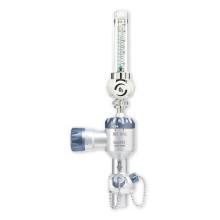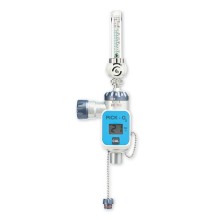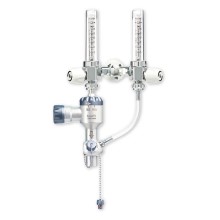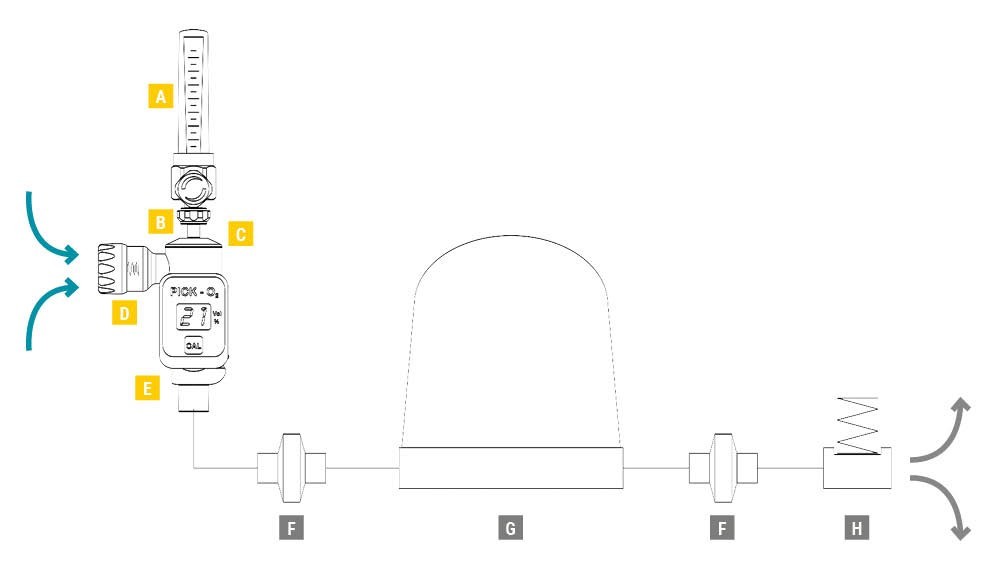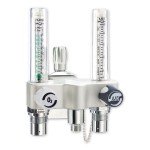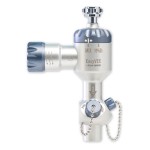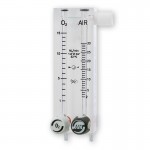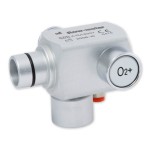EasyVEE® flow driver “jet”
The Jet device (Venturi unit) works as an high flow driver (booster) for high flow oxygen therapy through the use of HFNC or for CPAP, and it requires the gas supply from an Oxygen source only.
STRUCTURE
The EasyVEE® Jet device is equipped with an inlet connection to be mounted on the outlet of the variable area flowmeter, working as a “driver” source for Venturi. The intake ambient air regulator, complete with connector Ø 22 F. - according to ISO DIN 5356-1, allows the adjustment of the oxygen concentration value (FiO2) of the mixture supplied to the patient. The Jet device gives the possibility to monitor constantly the oxygen concentration present in the supplied mixture through an on-line oxygen analyser (optional), connected to the FiO2 monitor port. On the head of the device a quick dial nut allows the operator to select the function O2-Air (MIX) or 99% O2, this last one is foreseen to ventilate patient with high flows of Oxygen only. The mixture outlet connector
(Ø 22 M - 16 F) made in accordance with Standard ISO DIN 5356-1 enables to add an on-line antimicrobial filter assuring a protection for the patient and reducing the noise of the system, thus giving a higher comfort during the therapy.
APPLICATIONS
- Application for single high flow flowmeter: flow range 50 L/min. with double scale: 2÷10 L/min. and 10÷50 L/min.
- Application for twin high flow flowmeter: flowmeter [A] with end of scale 30 L/min.; flowmeter [B] with end of scale 15 L/min. or 30 L/min.
Tech Info
|
Sizes (LxWxH) |
150x100x55 mm |
| Weight | 0.35 Kg 0.55 Kg with oxygen analyzer (optional) |
| Supplied gas | O2 |
| Supplied standard pressure | 400 kPa (4 bar) +/- 10% |
| FiO2 adjustment | from 35% to max 99% |
| Oxygen supply connection | 9/16” UNF EN 13544-2 F. |
| Inlet connection for the intake ambient air | Ø22 F. ISO DIN 5356-1 |
|
Outlet connection
|
Ø22 M. - 16 F. ISO DIN 5356-1
|
|
Oxygen Analyzer |
|
|
Sensor type |
electrochemical |
|
Range of measurament |
0÷99% Vol. oxygen |
| Display indication | 1% Vol. |
|
Measurement time |
1 sec. |
| Response time | < 5 sec. |
| Accuracy | ±3% read value |




Download Area
variable area oxygen flowmeters

